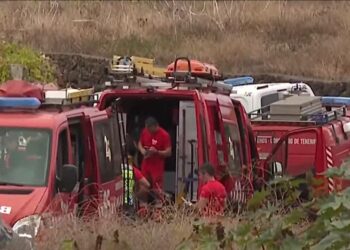The Geological and Mining Institute of Spain (IGME) announced on 16th September that Adeje’s little port has been designated as a Site of National Geological Interest, underscoring the significance of the geological formations located along the southwestern coastline of Tenerife.
These geological layers, comprised of ash and pumice, are the result of two considerable explosive-plinian eruptions, which document a style of volcanic activity that is infrequently observed on oceanic islands.
The eruptions that took place within the caldera of The Cañadas are identified as Fañabé (1,585 Ma) and Adeje (1,559 Ma).
“The exposures of ignimbrites and volcanic deposits in Adeje are notable for their importance in the study of explosive volcanism in the Canary Islands.”
The recognition of this area is primarily attributed to the presence of substantial layers of ignimbrites formed through pyroclastic flows, which offer an invaluable record for investigating future eruptions and assessing volcanic hazards.


Essential for Research
This declaration emphasises the educational and approachable qualities of the outcrops, rendering them a crucial location for geological inquiry and sustainable tourism.
The designated area encompasses 17.96 hectares and is situated in proximity to the La Caleta Site of Scientific Interest, collectively representing over 300,000 years of volcanic history.
“El Puertito de Adeje is now a protected site that supports both scientific research and sustainable tourism centred on geological heritage.”
Beyond its geological significance, the surroundings of Adeje’s little port present considerable natural and archaeological interests, with uncomplicated access for those eager to discover its geological and environmental treasures.
Maintaining the integrity of this site is vital not merely for scientific research but also for safeguarding the geological heritage of the Canary Islands, thus fostering activities that enhance volcanic resilience and educational tourism.















